In the ever-changing world of market research, one thing holds true: there's no substitute for genuine human connection. With Zoom fatigue and digital distractions on the rise, in-person market research has never been more important, offering depth and authenticity. Being physically present in a market research facility allows for deeper engagement with participants, fostering natural conversation flows and providing opportunities for lively back room collaboration.
This tangible presence also fosters trust and rapport between moderators and participants, creating an environment conducive to open and honest dialogue – essential for uncovering deeper insights. Let's dive into insights from industry experts, shedding light on the resurgence of face-to-face interactions and the endless possibilities they bring to qualitative research and focus groups.
Deeper Engagement and Richer Insights
Lisa Harrison, Qualitative Research Director at the Olinger Group
I am in the middle of a multi city in person project. Most of the respondents are a bit older, before the groups I will go and sit in the waiting room and chat with them each for a short period of time. Then when they walk in the room, I’m their friend, I’m a familiar face. They will also chat with each other and feel a camaraderie that they can share their stories and trade ideas and it becomes very organic.
There is more of a “we’re all in this together” feeling when people are sitting around a table, looking at each other rather than staring into their camera. Plus with in person you can really sense someone’s emotions when it’s a sensitive topic. When someone is sharing something that is highly personal and you can see tears welling in their eyes you can take a pause and give them space to process their emotion.
Here’s what I believe to be the top reasons to use in-person research:
- Deeper Engagement - In-person research allows for deeper engagement with participants, fostering a more natural conversation flow and enabling the moderator to observe non-verbal cues and reactions in real-time.
- Richer Insights - Being physically present in the research environment often leads to richer insights as moderators can pick up on subtle nuances, group dynamics, and environmental factors that may influence participant responses.
- Builds Trust and Rapport - Face-to-face interactions help build trust and rapport between the moderator and participants, creating a conducive environment for open and honest dialogue, which is essential for uncovering deeper insights.
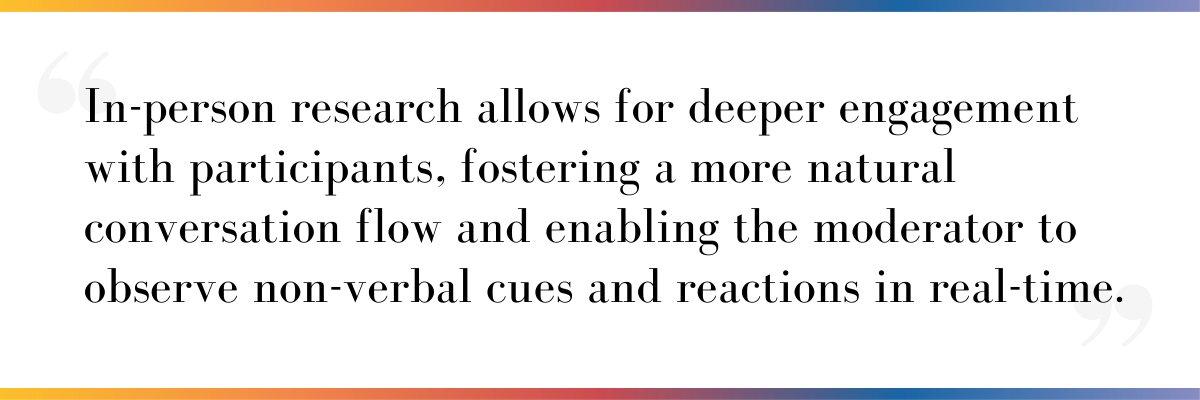
Building Trust and Rapport
Raj Manocha, Chief Client Officer at Sago
The fact is, face-to-face research is back in full swing, and research companies must put innovation and respondents first. At Sago, our global facilities serve as its exploration hub where we engage with some of the most diverse panelists across the world, but we understand the need to change our ways to build better engagement and stronger outcomes for our projects.
Ultimately, as we navigate the ever-evolving landscape of research methodologies, our dedication to meeting respondent needs, fostering innovation, and embracing emerging technologies remains unwavering. Together, through the synergy of face-to-face interactions, asynchronous approaches, and groundbreaking technology, we continue to redefine what's possible in the realm of research.
Because facilities play a vital role in our offerings, complementing our vast solutions in both quantitative and qualitative research methods, we took time to better understand respondent needs. As a result, most live sessions are scheduled after working hours, acknowledging the preferences of over 60% of respondents who favor evening sessions.
We continue to see innovative methodologies combined with face-to-face research to uncover deeper insights and higher engagement. In 2023 alone, across all our US facilities, we recruited over 220,000 participants for more than 2,000 studies. From research on pop culture, new automobile features, drug delivery devices, our teams dedicated their time to creating strong rapport with respondents that drove excitement in them sharing opinions and trying new products.
Ultimately, as we navigate the ever-evolving landscape of research methodologies, our dedication to meeting respondent needs, fostering innovation, and embracing emerging technologies remains unwavering. Together, through the synergy of face-to-face interactions, asynchronous approaches, and groundbreaking technology, we continue to redefine what's possible in the realm of research. With each study, we not only gather data but also cultivate connections and insights that propel us forward towards a future of boundless discovery and meaningful impact.
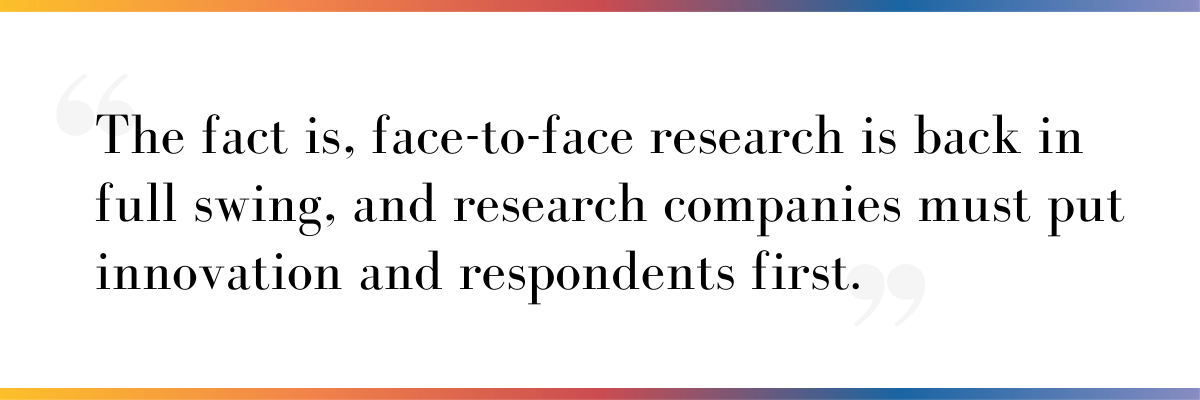
The Vibrancy of In-Person Research
Bob Qureshi, Managing Partner of i-View Studios London
The variety and nature of in person research covers all industry sectors with healthcare, medical UX and automotive along with consumer product testing being particularly strong. The viewing back room is pleasingly vibrant with corporate clients hugely enthused with immersion in person research allows.
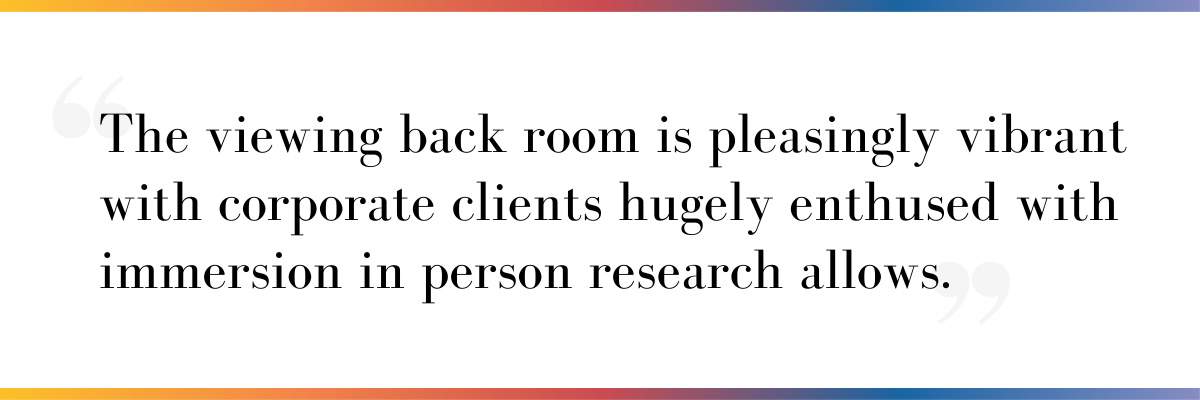
Hybrid Approaches for Holistic Insights
Alex Hunt, CEO at Behaviorally
Every methodology has a time and place. As domain leader in packaging, and while Behaviorally delivers ever more precise quantitative predictions of pack design effectiveness using both digital and AI-based approaches, when working against objectives where a structural or sensory change to packaging is proposed, it’s essential to get prototypes in the hands of consumers in-person. It’s when combining these in-person qualitative learnings as a hybrid with quantitative digital validation that we’ve obtained the most holistic and impactful insights for the leading CPGs we’re proud to serve.
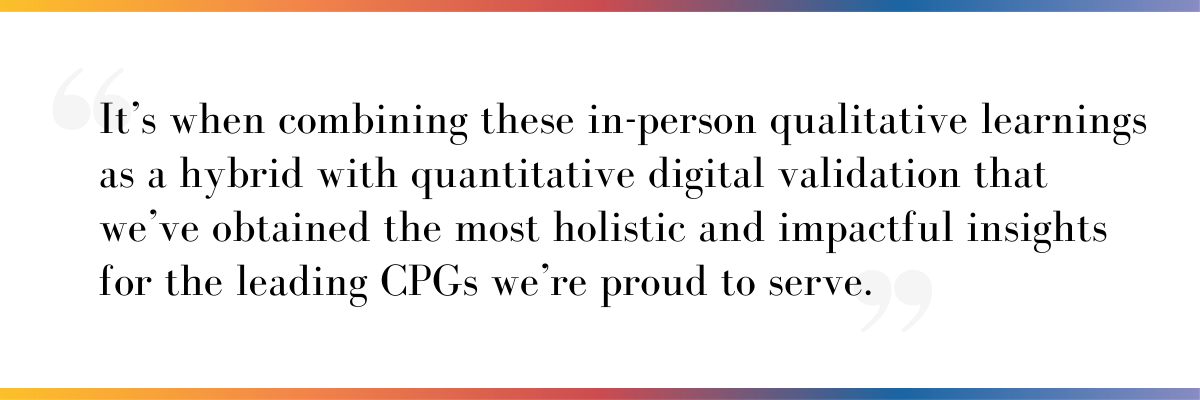
The Rejuvenation of Face-to-Face Connections
Molly Lazzara, President at ML Strategy
In-person research is making a comeback for a few reasons. First, engagement can be lackluster. Everyone has Zoom fatigue. It's getting easy, and frankly common, to multi-task while online, therefore respondents aren't always fully engaged in the conversation. Tech issues, being in their car, having family at home, all of these take their attention and focus away from the key objectives, no matter how much you require they be in a quiet place.
Second, in-person is often much richer and deeper in its ability to create conversation. Respondents are committed and excited to provide their opinions. Whether it's a focus group where the group can build from one another, or it's putting yourself in actual situations in the home, in the store, etc. you are able to more robustly build an understanding of a consumer's life and behavior.
Last, traveling to new markets provides opportunity outside of the research itself. After years of not traveling, many have not seen their key markets in a while, and much has changed. For consumer goods clients, store visits are important. Regional brands have emerged. Shopping behavior has changed, so visiting stores can give context to insights that are not possible with online interviews.
Tips for Talking to Clients About In-Person Research:
When talking to clients about doing research in-person, I talk about the high level of engagement respondents often have. I also talk about the ability to go beyond just conversations to experiences. If we consider using stimuli that consumers can pick up, touch, feel, taste - even as a quick supplemental exercise, it often adds rich dimension to the insights. It's not something we can do online ad-hoc, so sometimes in person allows for pivots that are more opportunistic.
If user experience is a goal, it's often hard to accomplish, in a meaningful way, without being in-person.
In-person also allows for broader, more robust discussions amongst the team. Being out of the office creates the opportunity to workshop and discuss insights in real time, resulting in the ability to act faster and put the insights to use immediately. It allows for insights you can run with quickly.
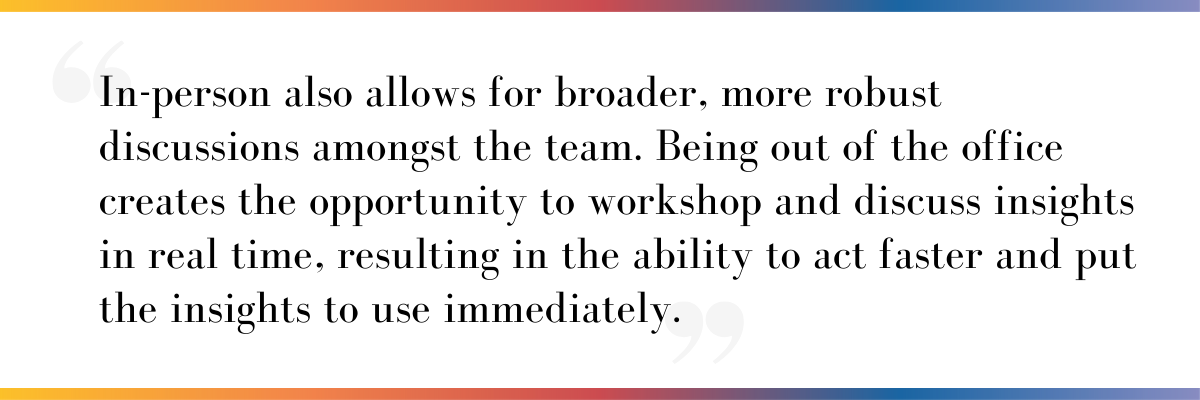
Looking Towards the Future
Sarah Kotva, Executive Vice President at Fieldwork
In today's fast-paced digital world, it's easy to get caught up in screens and short attention spans. But let's not forget the basics: when it comes to selling, you're dealing with people. And people want to be seen, heard, and understood. That's where in-person market research, or #facetofacemrx, comes in.
When it comes to market research, where trust and security are vital, nothing beats a genuine, face-to-face conversation. While AI has its place, it can't match the empathy and intuition of human interaction. At Fieldwork, we know firsthand the value of #facetofacemrx. It's not just about gathering data; it's about building relationships and sharing experiences.
Our clients consistently rave about the insights gained through in-person research. It's more than just numbers; it's about the collaborative energy and the moments of discovery. Four years ago, the industry buzzed about the future of in-person insights. Today, we're proud to say that future is alive and well.
Fieldwork is proud to support so many industries conducting research. Because when you're aiming for greatness and breakthroughs, nothing beats a face-to-face connection.
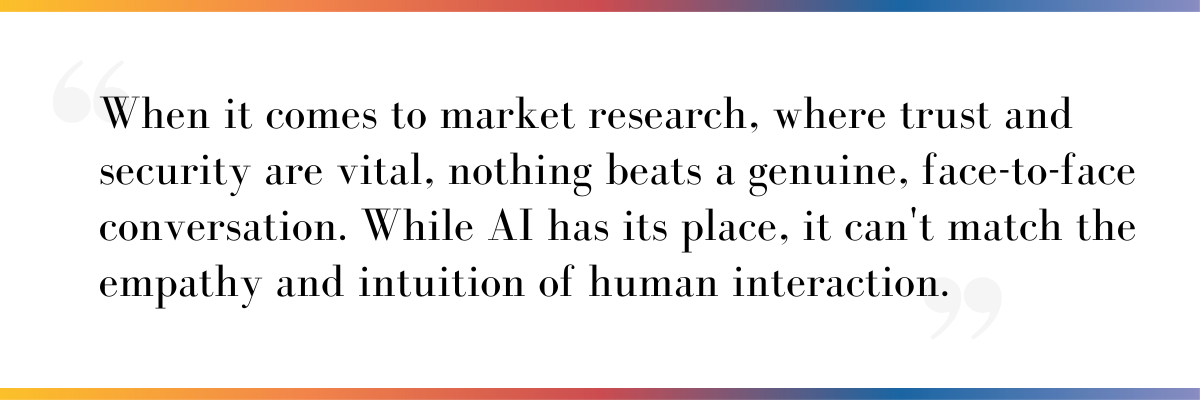
Synthetic Data Can’t Replace In-Person Research
Kelli Hammock, Strategic Communications Director at L&E Research
It's evident that the pandemic has reshaped how researchers approach in-person studies. While virtual research has proven effective, particularly for certain types of studies, the value of in-person engagement for sensory and human factors testing remains clear and continues to be a necessity. In-person settings can uniquely capture the emotional and interactive aspects of focus groups, underscoring their ongoing importance in qualitative research.
The industry's consideration of leveraging synthetic responses for qualitative adds a new dimension, but it's crucial to proceed with caution and not rely solely on artificial data when making decisions – synthetic data is still incapable of conveying a true emotional response.
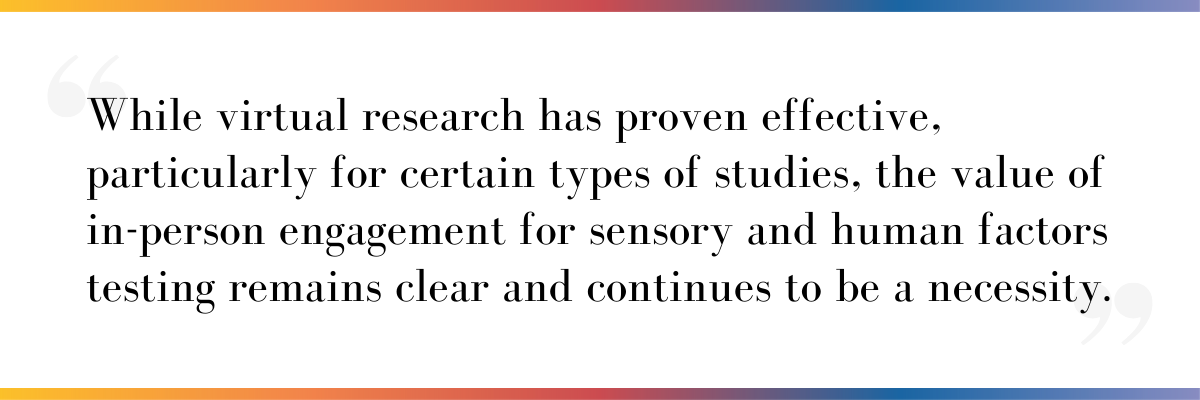
Returning to In-Person
Looking back on the wisdom shared by industry leaders and the potential of in-person market research, one thing is clear: the future looks promising. In a world flooded with data and digital noise, human connection remains essential. By embracing the return to face-to-face interactions in market research facilities, we unlock deeper insights and foster genuine connections that drive innovation. Let's champion the power of authentic human interaction and embark on a collaborative journey towards impactful research and meaningful discoveries.

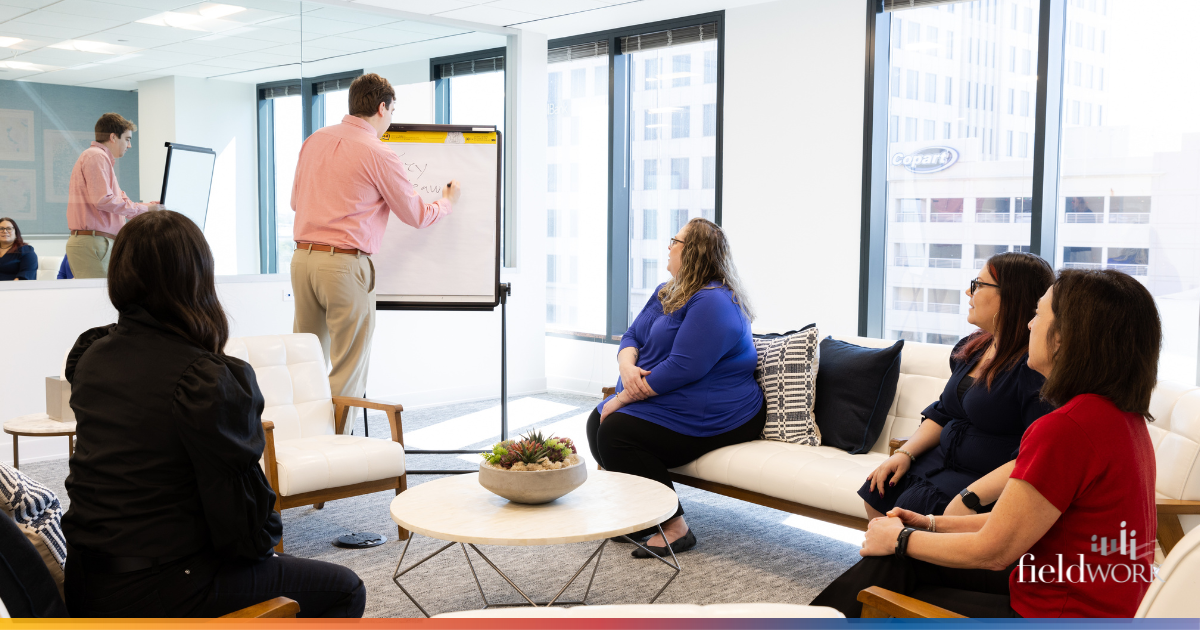








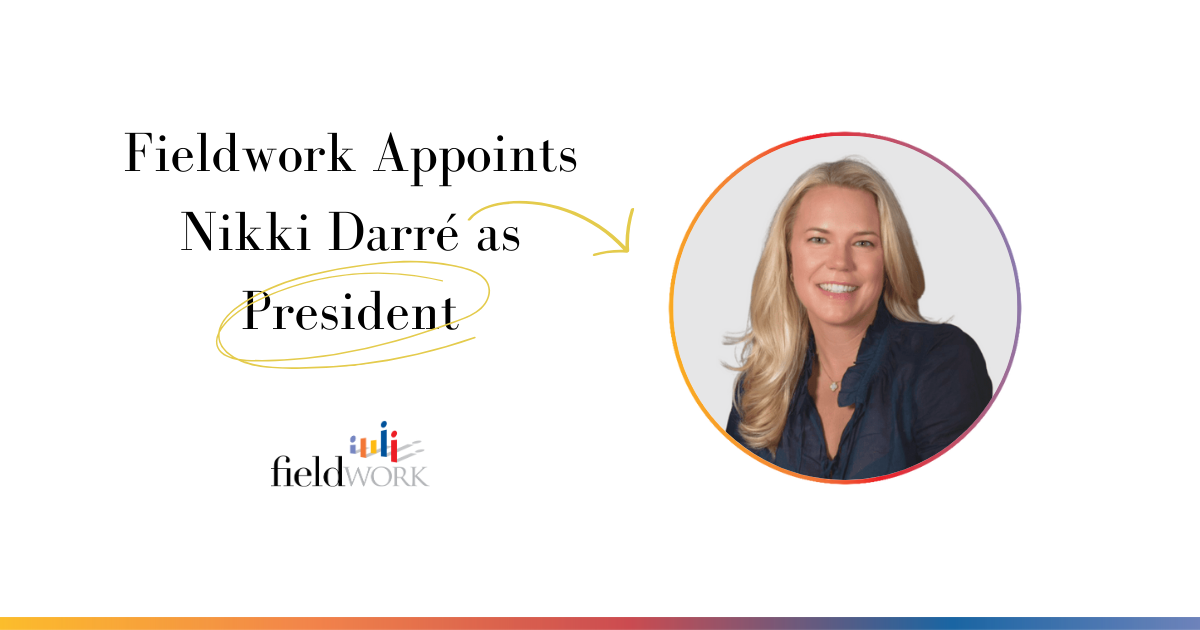
.png)
